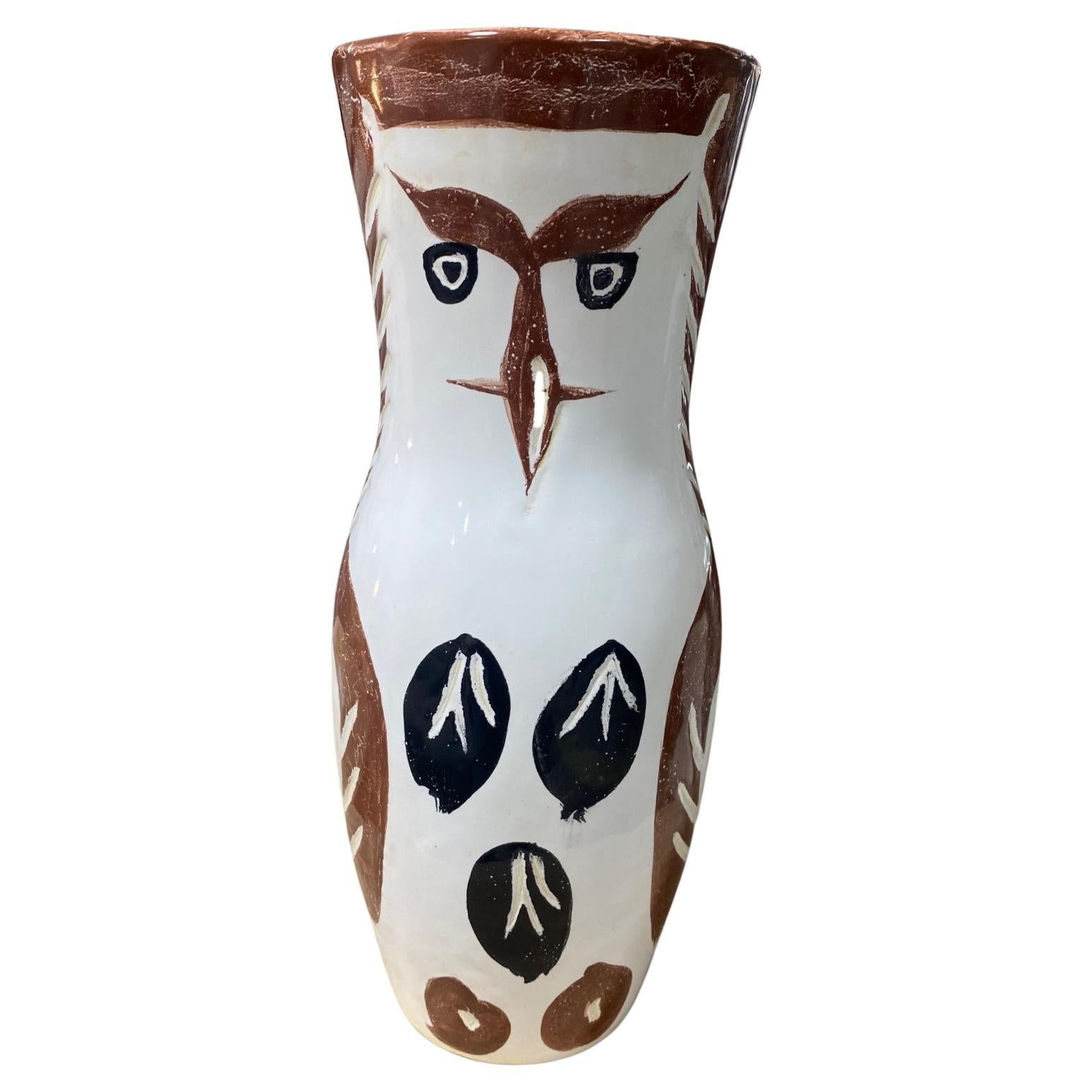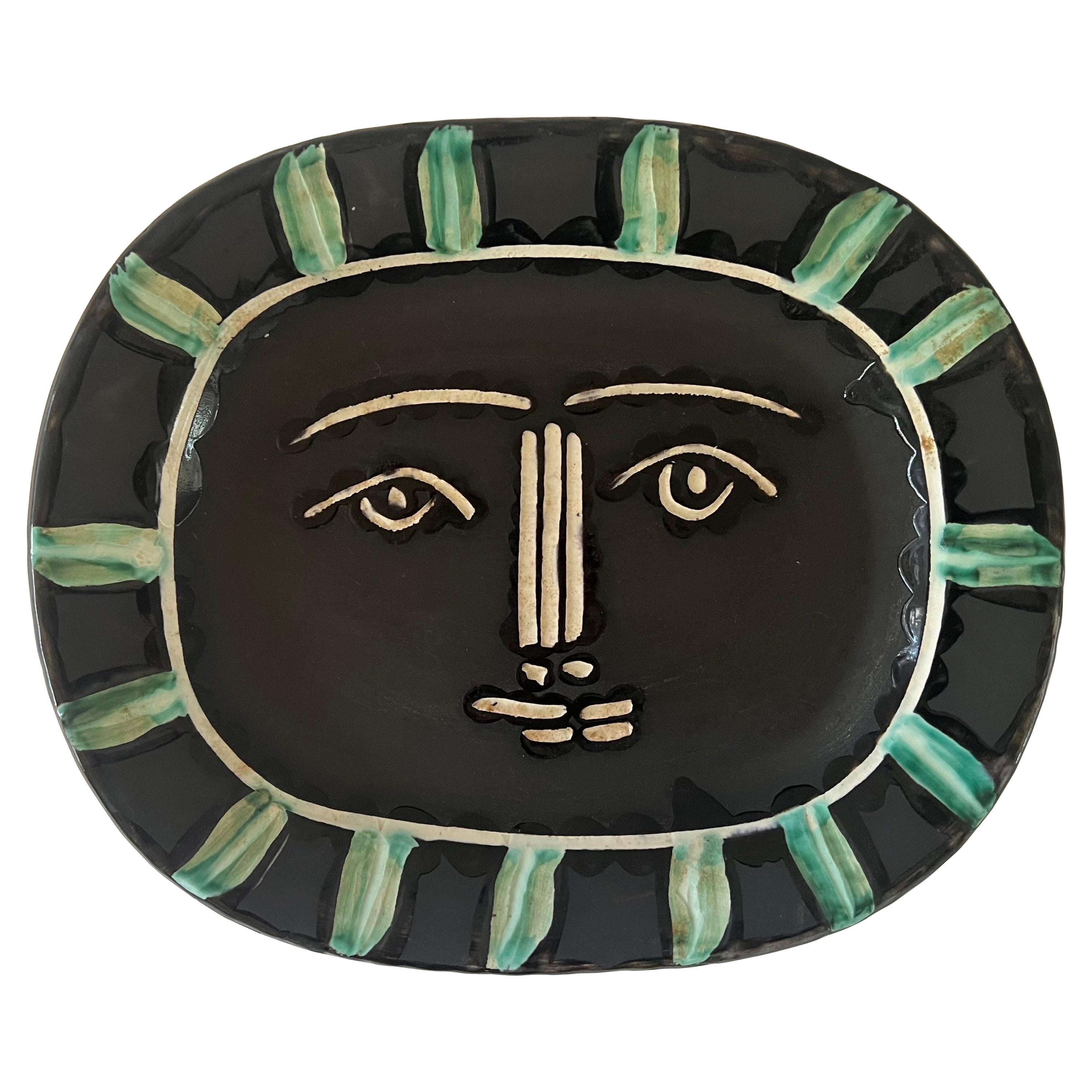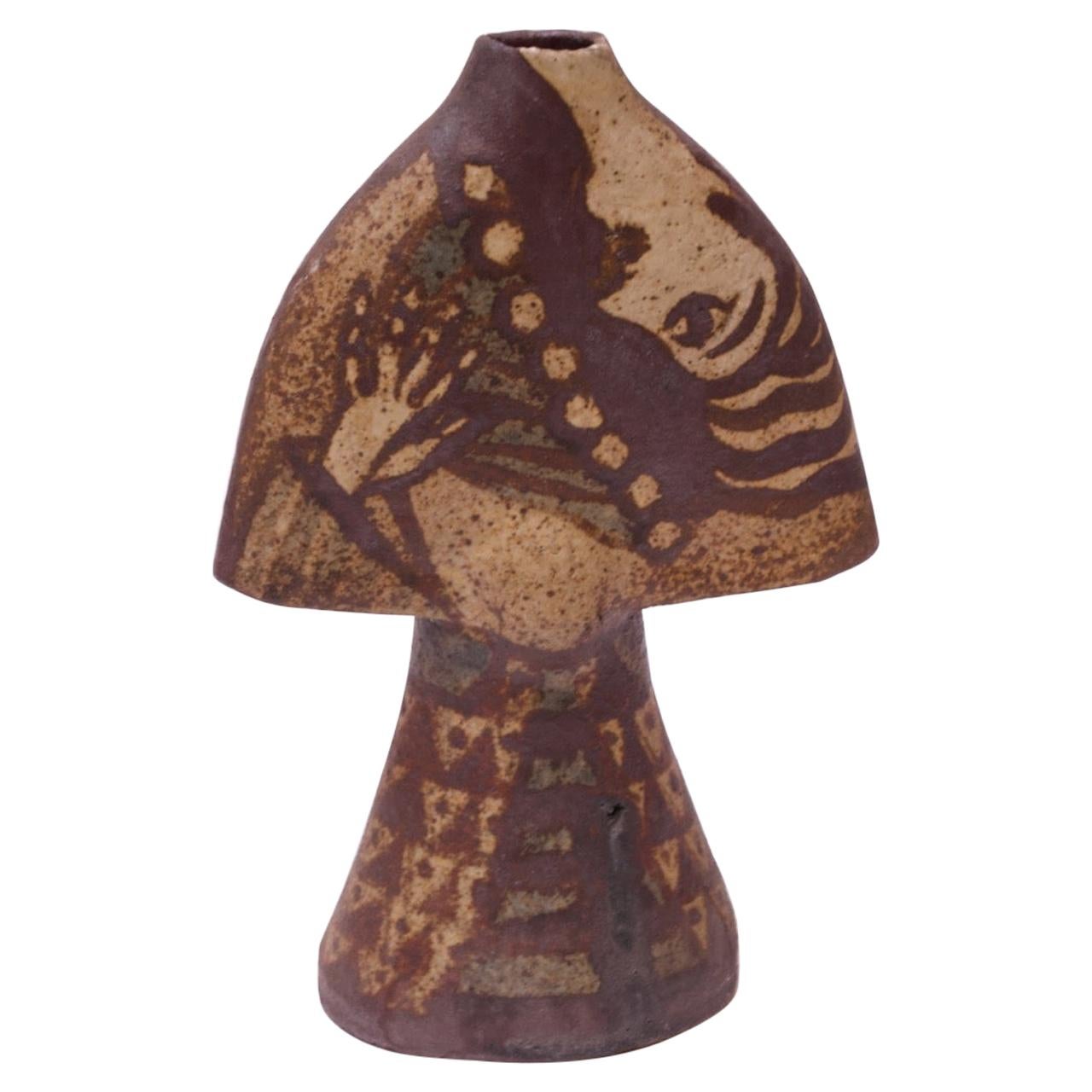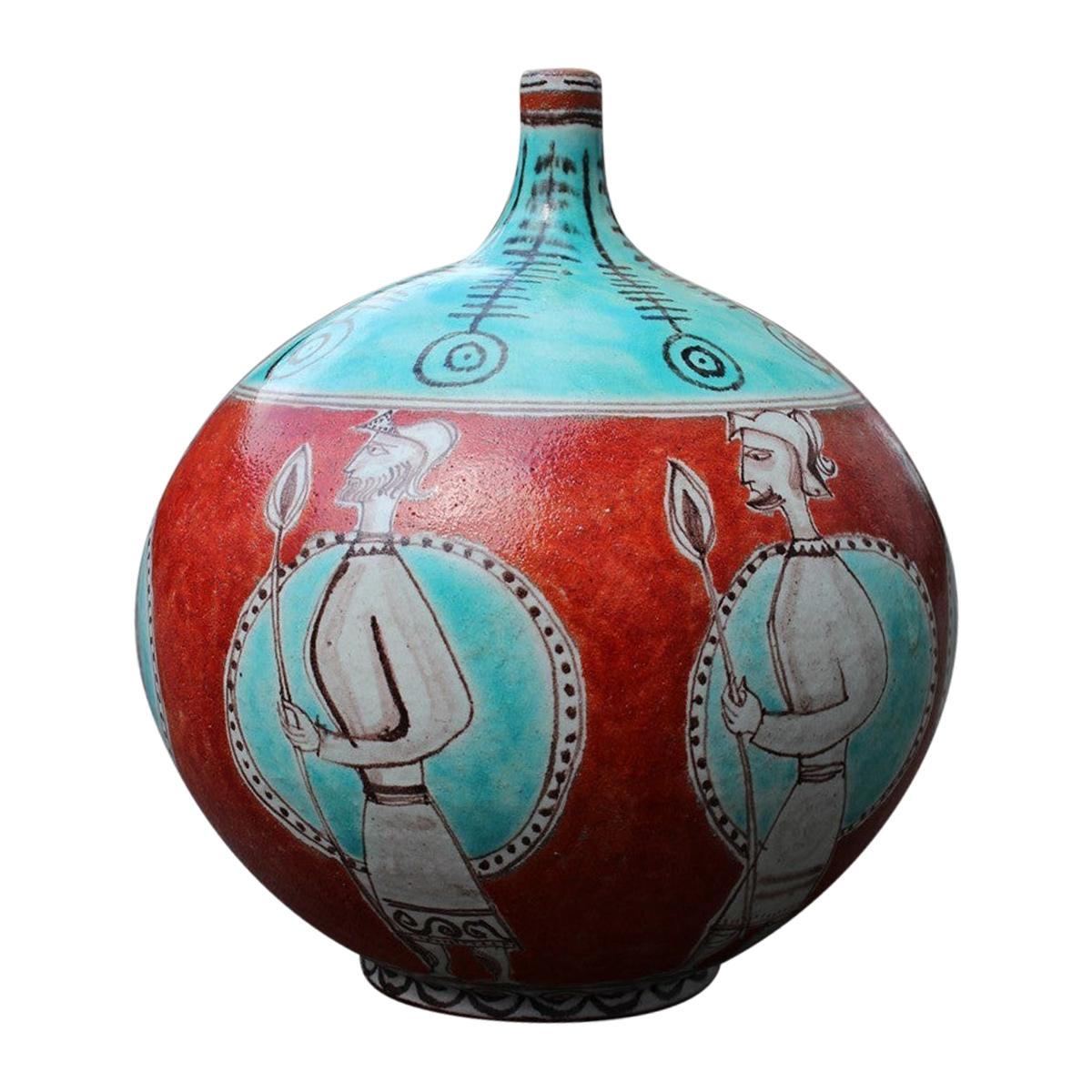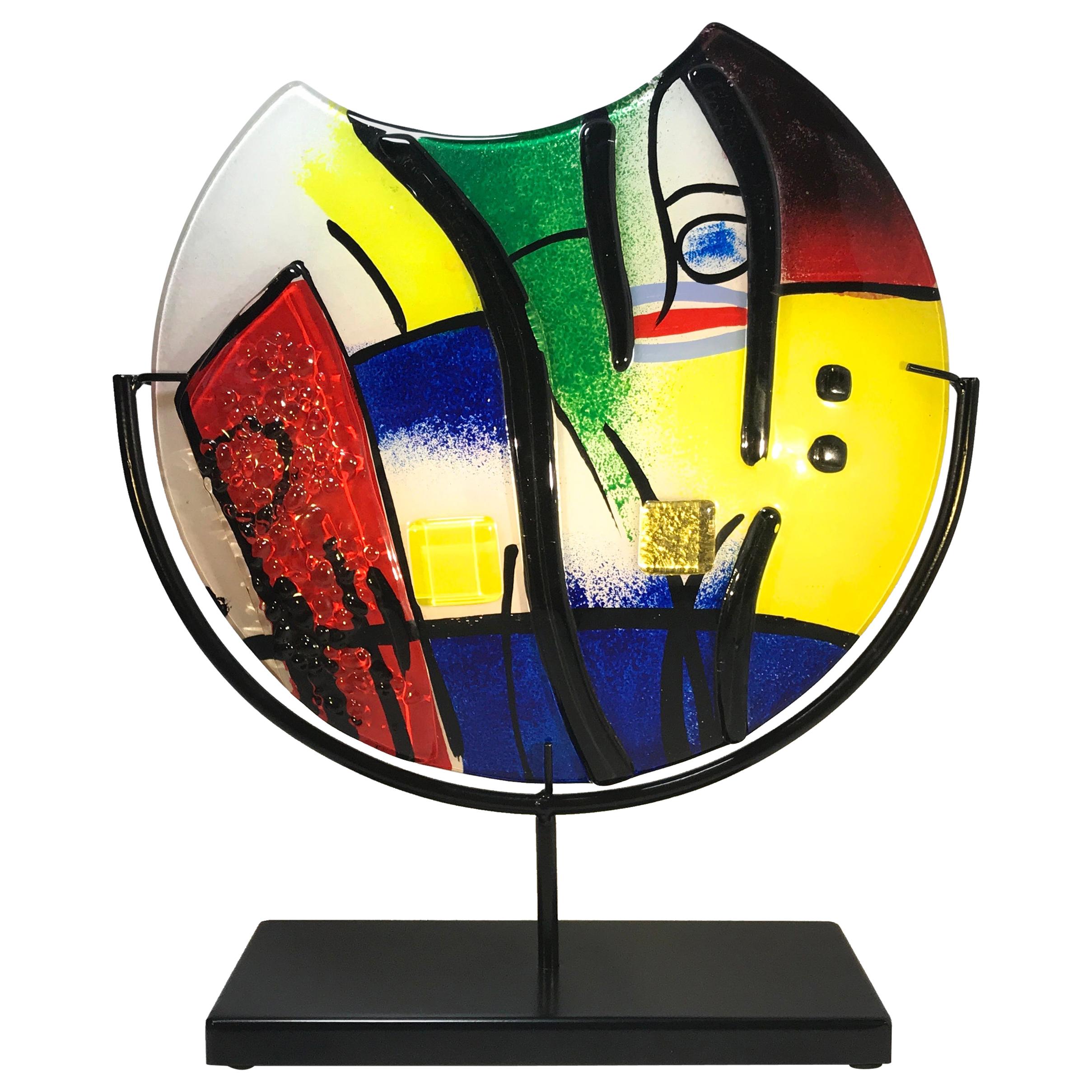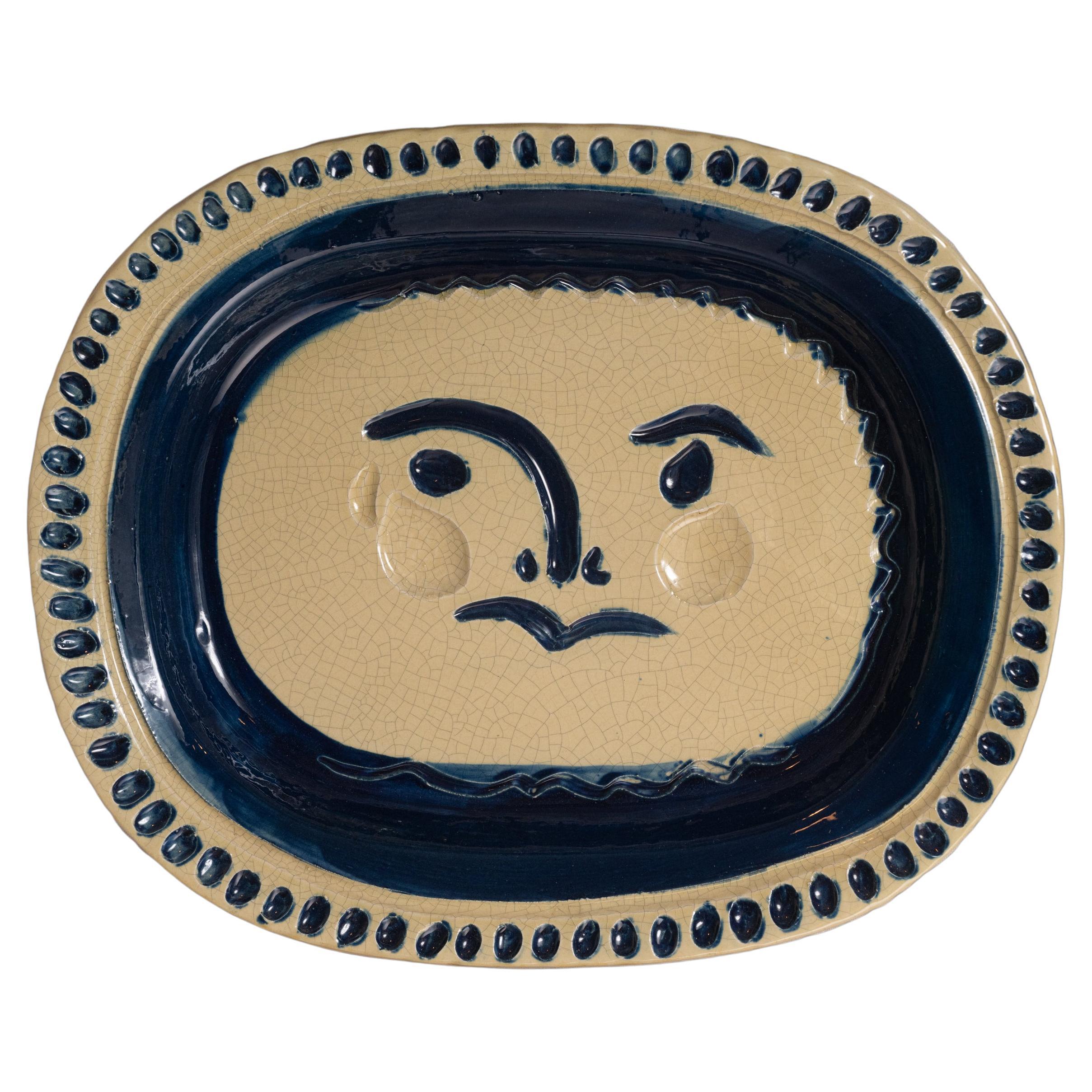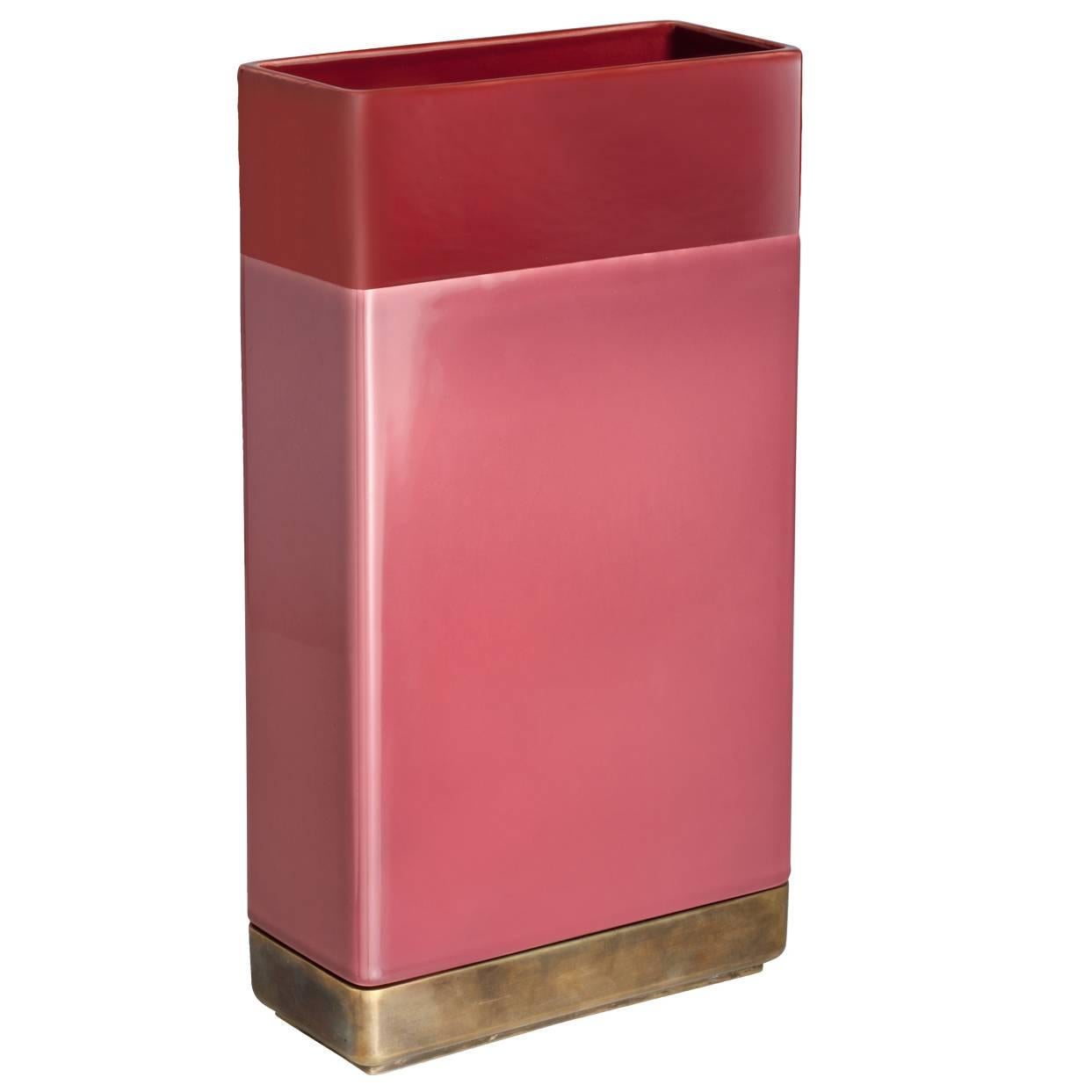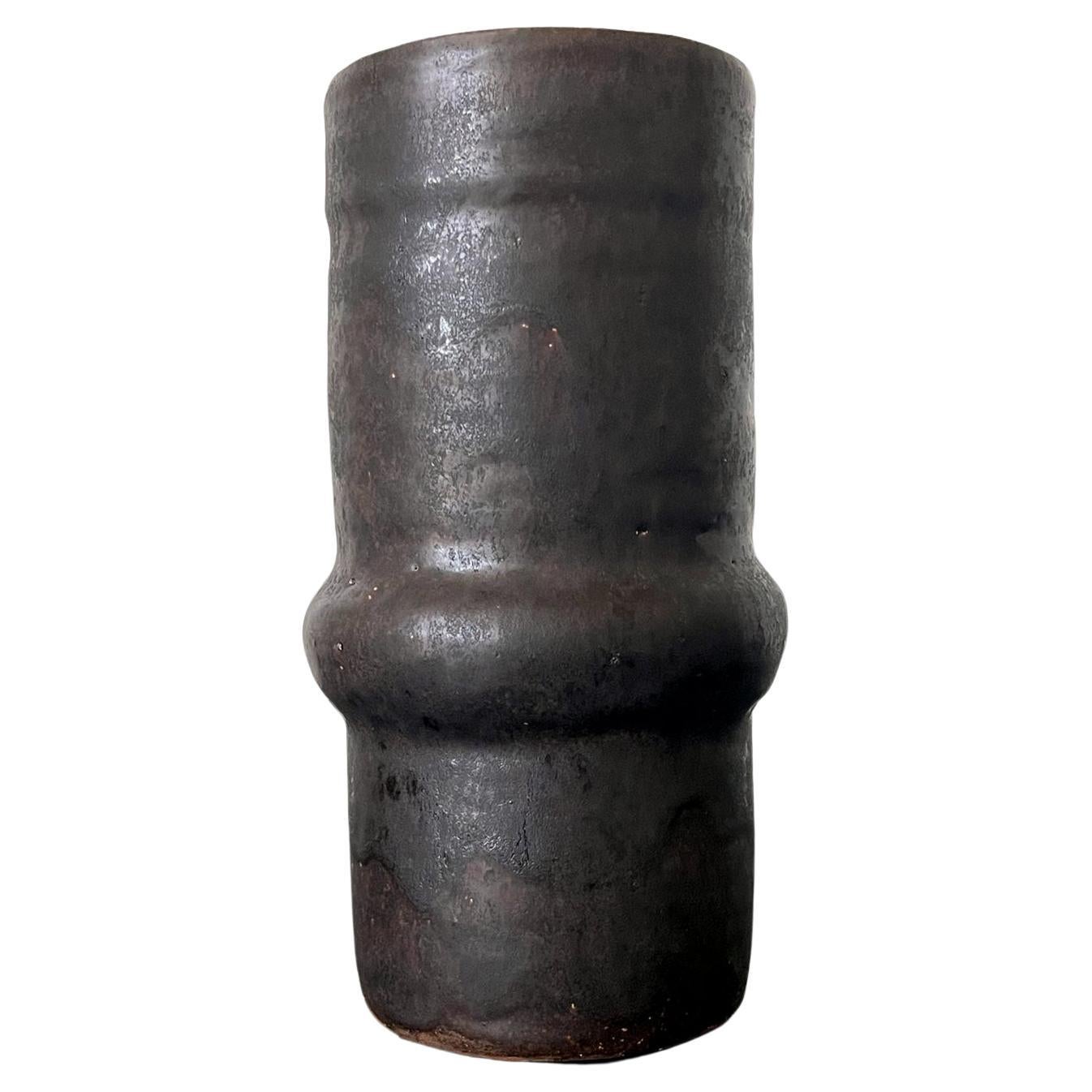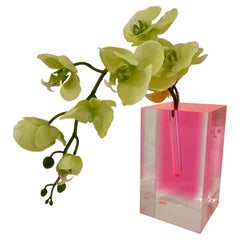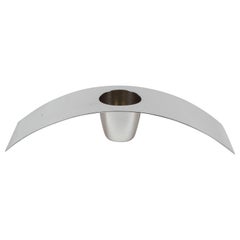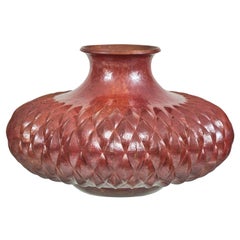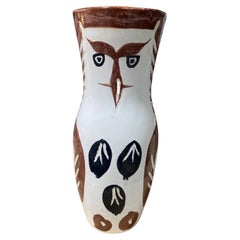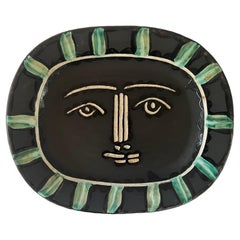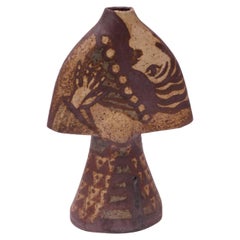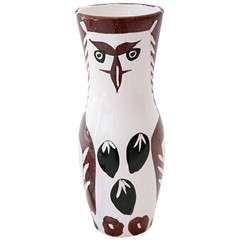
Young Wood-owl (A.R. 135) Vase by Pablo Picasso
View Similar Items
Young Wood-owl (A.R. 135) Vase by Pablo Picasso
About the Item
- Creator:Madoura (Maker),Pablo Picasso (Designer)
- Dimensions:Height: 10 in (25.4 cm)Diameter: 4 in (10.16 cm)
- Materials and Techniques:
- Place of Origin:
- Period:
- Date of Manufacture:1952
- Condition:
- Seller Location:Palm Desert, CA
- Reference Number:1stDibs: 13030879771941
Pablo Picasso
One of the most prolific and revolutionary artists the world has ever seen, Pablo Picasso had a tremendous impact on the development of 20th-century modern art. Although he is best known for his association with the Cubist movement, which he founded with Georges Braque, Picasso’s influence extends to Surrealism, neoclassicism and Expressionism.
“Every act of creation is, first of all, an act of destruction,” the Spanish artist proclaimed. In Picasso's Cubist paintings, he emphasizes the two-dimensionality of the canvas, breaking with conventions regarding perspective, foreshortening and proportion. Picasso was inspired by Iberian and African tribal art. One of his most famous pre-Cubist works is Les Demoiselles d’Avignon (1907), a painting considered immoral and shocking at the time for its depiction of nude women whose faces resemble Iberian tribal masks.
Picasso made many portraits in this style, most often of the women in his life, their expressively colored faces composed of geometric shards of surface planes. In Woman in a Hat (Olga), 1935, he painted his first wife as an assemblage of abstract forms, leaving the viewer to decipher the subject through the contrasting colors and shapes. Picasso was a tireless artist, creating more than 20,000 paintings, drawings, prints, ceramics and sculptures. Tracing his life’s work reveals the progression of modern art, on which he had an unparalleled influence.
Browse an expansive collection of Pablo Picasso's art on 1stDibs.
- "Vase #2" Acrylic Bud Vase by Shiro KuramataBy Shiro KuramataLocated in Palm Desert, CAThis is the "#2 Vase" by Shiro Kuramata, featuring the classic beautiful submersion of pink. This sculptural vase is 4.5" x 4.5" x 7.5, a wonderful size for a desk accessory or a wel...Category
Vintage 1980s Japanese Post-Modern Vases
MaterialsLucite, Glass
- Abstract Geometric Silver-Plated Vase by Lino SabattiniBy Lino SabattiniLocated in Palm Desert, CAA slick, curved silver-plated vase by Lino Sabattini. Signed "Lino Sabattini / Cormorano 1966/2000, Collezione Sabattini Italy" on the face of the piece; and stamped "Sabattini Made ...Category
Vintage 1970s Italian Mid-Century Modern Vases
MaterialsMetal, Silver
- Mexican Hand Chased Copper Vase by Ignacio Punzo ÁngelBy Ignacio Punzo ÁngelLocated in Palm Desert, CAMade by Ignacio Punzo Ángel, this copper vase has been hand burnished and chased in a multiple diamond shaped pattern. The Punzo family is well known for their copper and silver craftsmanship. Located in Santa Clara Del Cobre in Mexico, the mastery of copper and silver artwork have been passed down for generations. Brothers Ignacio and Abdón Punzo...Category
1990s Mexican Rustic Vases
MaterialsCopper
- Japanese Ceramic VaseLocated in Palm Desert, CAVery unique Japanese vase with abstract pattern in a variety of brown tones. The deepest brown glaze is raised, giving the vase a wonderful tactile texture.Category
Late 20th Century Japanese Organic Modern Vases
MaterialsCeramic
- 'Tetes'/Heads Porcelain Vase Designed by Jean Cocteau '1889-1963' for RosenthalBy Jean Cocteau, RosenthalLocated in Palm Desert, CAThis is beautiful porcelain vase designed by Jean Cocteau for Rosenthal. The piece is in overall wonderful condition. The use and implication of irregular shapes throughout the piece is a quintessential aspect of Cocteau's work. The freeform vase accentuates the 2 facial motifs and minimal abstract accents. Jean Cocteau / 1952 is on the piece as seen in the pictures. "Jean Cocteau 'Classic Rose / Rosenthal Group // Germany" is sited on the underside of the vessel. This concept was first designed in 1952 by Jean Cocteau and was produced in the early 1970s by the Classic Rose Rosenthal...Category
Vintage 1970s German Mid-Century Modern Vases
MaterialsPorcelain
- Jean Cocteau Decorated VaseBy Roche Bobois, Jean CocteauLocated in Palm Desert, CAThis is a glazed earthenware vase produced by Roche Bobois in the 2010s. The vase utilizes a design Jean Cocteau produced in the early 1960s. It features 2 taupe profiles with geomet...Category
2010s French Mid-Century Modern Vases
MaterialsEarthenware
- Pablo Picasso Signed Limited Madoura Pottery Chouetton Owl Vase A.R. 135, 1952By Pablo PicassoLocated in Studio City, CAA wonderful, original Mid-Century Madoura pottery vase by renowned Spanish artist Pablo Picasso titled "Chouetton (Young Wood Owl)". The work, which features two distinct owl faces,...Category
Vintage 1950s French Mid-Century Modern Vases
MaterialsCeramic, Earthenware, Pottery
- Ceramic Plate Visage Gris 'Grey Face' A.R. 206 by Pablo Picasso & Madoura, 1953By Pablo Picasso, MadouraLocated in New York, NYThe engraved and brush painted ceramic plate, Visage Gris (Grey Face) is one the most iconic pieces created by Pablo Picasso (1881 - 1973) at the Madoura workshop in Vallauris, France. It is said "all portraits are self portraits". In this work, we see Picasso's wistfulness, vulnerability and humor set within a beautiful image representing both the sun and the moon, the masculine and the feminine. Picasso mastery of form, image, composition and subtle color is evident in a work that resonates transcendence. Created in 1953, Pablo Picasso ceramic Visage Gris (Grey Face), 1953 A.R. 206 is a Madoura white earthenware clay, knife engraved under partial brushed glaze with decoration in engobes (green, black, white) from the edition of 500. This work is stamped with the 'Madoura PLEIN FEU' and ‘EMPREINTE ORIGINALE DE PICASSO’ pottery stamps on the reverse. Dimensions: 12 3/8 x 15 1/8 x 1 5/8in (31.4 x 38.3 x 4.1cm). Madoura was an artisan workshop created by Georges and Suzanne Ramie which collaborated with Picasso in the fabrication and hand painting of the works. Pablo Picasso designed 633 different ceramic editions between 1947 and 1971 at the Madoura workshop, with a number of variants and unique pieces resulting from these initial works. He began by creating simple, utilitarian objects such as plates and bowls, but later produced more complex forms, including pitchers and vases — their handles occasionally shaped to form facial features, or anatomical parts of his animal subjects. Picasso remains one of the highest-grossing artists at auction today, and the range of his ceramics means it's possible to find both a good investment and a beautiful object. Visage Gris is among the most important. A Short Biography follows: Pablo Picasso revolutionized the art world and to many is THE artist of the 20th century. He is famous for his role in pioneering Cubism with Georges Braque and for his melancholy Blue Period pieces. Original signed Picasso lithographs and prints are a sure investment. Madoura Picasso ceramics are highly collectible in their own right. As one of the most influential Modern artists of the 20th century, Pablo Picasso is renowned as a legendary artistic master to this day. Born on October 25, 1881 in Malaga, Spain, Pablo Picasso was a child prodigy who was recognized as such by his art-teacher father, who ably led him along. The small Museo de Picasso in Barcelona is devoted primarily to his early works, which include strikingly realistic renderings of casts of ancient sculpture. Picasso was a rebel from the start and, as a teenager, began to frequent the Barcelona cafes where intellectuals gathered. He soon went to Paris, the capital of art, and soaked up the works of Edouard Manet, Gustave Courbet, and Henri de Toulouse-Lautrec, whose sketchy style impressed him greatly. Then it was back to Spain, a return to France, and again back to Spain – all in the years 1899 to 1904. Before he struck upon Cubism, Picasso went through a prodigious number of styles – realism, caricature, the Blue Period, and the Rose Period. These distinguished styles are apparent in the unique original works as well as Picasso ceramics, lithographs, linocuts, and etchings that he created later in his life. The Blue Period dates from 1901 to 1904 and is characterized by a predominantly blue palette and focuses on outcasts, beggars, and prostitutes. This was when he also produced his first sculptures. The most poignant work of the style, La Vie (1903), currently located in Cleveland’s Museum of Art, was created in memory of his childhood friend, the Spanish poet Carlos Casagemas, who had committed suicide. The painting started as a self-portrait, but Picasso’s features became those of his lost friend. The composition is stilted, the space compressed, the gestures stiff, and the tones predominantly blue. The Rose Period began around 1904 when Picasso’s palette brightened and is dominated by pinks and beiges, light blues, and roses. His subjects are saltimbanques (circus people), harlequins, and clowns, all of whom seem to be mute and strangely inactive. One of the premier works of this period is Family of Saltimbanques (1905), currently in Washington, D.C. at the National Gallery, which portrays a group of circus workers who appear alienated and incapable of communicating with each other, set in a one-dimensional space. In 1905, Picasso went briefly to Holland, and on his return to Paris, his works took on a classical aura with large male and female figures seen frontally or in distinct profile, as in early Greek art. One of the best examples of this style is in the Albright-Knox Gallery in Buffalo, NY, La Toilette (1906). Several pieces in this new, classical style were purchased by Gertrude Stein (the art patron and writer) and her brother, Leo Stein. With his groundbreaking 1907 painting Les Demoiselles d’Avignon...Category
Mid-20th Century French Mid-Century Modern Figurative Sculptures
MaterialsEarthenware
- Cubist-Style Studio Stoneware Pottery Vase after Pablo PicassoLocated in Brooklyn, NYIntriguing Cubist-style studio stoneware vase with a distortion of a woman's face to both sides. Nice textural elements: mottling to the surface along with linear and geometric motif...Category
Vintage 1970s American Mid-Century Modern Ceramics
MaterialsStoneware
- Ceramic Vase by Franco Cardinali Vallauris from the 50's Picasso StyleBy Franco CardinaliLocated in Lyon, FRVery beautiful ceramic vase with handle by the artist Franco Cardinali from the 1950s from the Vallauris workshops. Very nice glazing in sky blue, brown and white colours with drawin...Category
Vintage 1950s French Organic Modern Vases
MaterialsCeramic
- Green and White Free Form Ceramic Vase circa 1950 French Design Style of MadouraBy MadouraLocated in Neuilly-en- sancerre, FRCeramic vase Original free form ceramic vase with white and green ceramic glazes colors Perfect condition In the style of MADOURA 20th ...Category
Mid-20th Century French Mid-Century Modern Vases
MaterialsCeramic
- Large Orange Giovanni de Simone 1960 Vase with Picasso Style WarriorsBy Giovanni de SimoneLocated in Palermo, SicilyLarge orange Giovanni De Simone 1960 vase with Picasso style warriors. In his hometown he founded his own workshop "Maioliche d'Arte De Simone" at piazza Leoni 2 in Palermo: it was the 1950s and here he devoted himself to the production of use ceramics and decorative wall tiles and traditional furnishings painted by hand. His evolution as an artist led him to create works inspired by primitivism but characterized by a burlesque and festive vein with enamel decorations in bright colors, often given in thickness, as objects of use for furnishings and majolica sculptures in traditional and modern style. The light-hearted reinterpretation, full of bright shades that also reflect the most traditional Sicilian art...Category
Vintage 1960s Italian Mid-Century Modern Vases
MaterialsCeramic
Recently Viewed
View AllRead More
Science Uncovers Hidden Truths behind Young Pablo Picasso’s Blue Period
From 1901 to 1904, Picasso limited his palette to bluish hues in producing some of his most famous early works. A new show looks at the recycled materials, hidden underpaintings, surprising influences and bohemian lifestyle that led to their creation.
Who Are the Most Popular Artists on 1stdibs?
Learn the stories of some of the world's most recognizable artworks and their makers.
